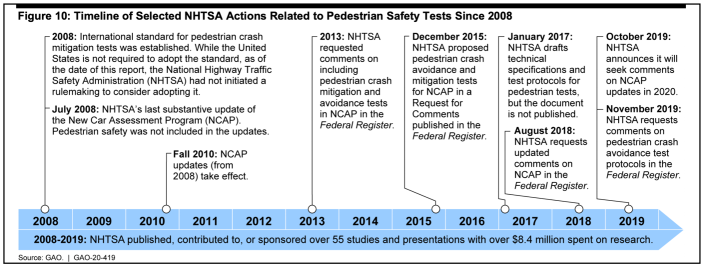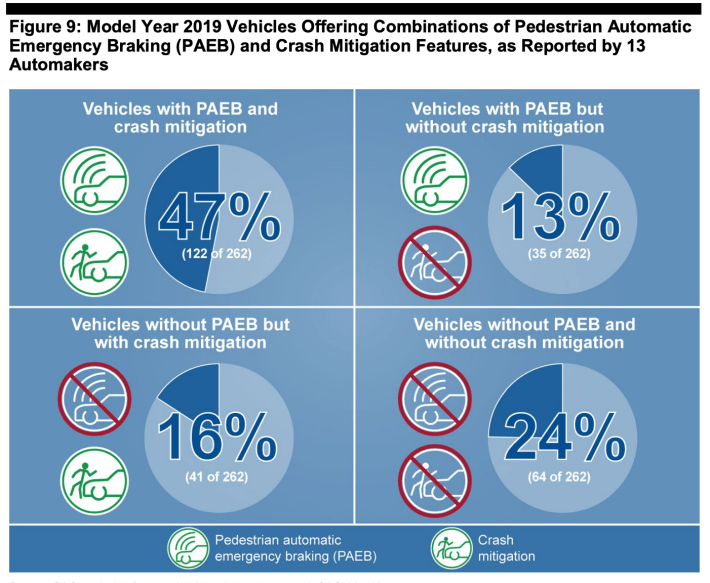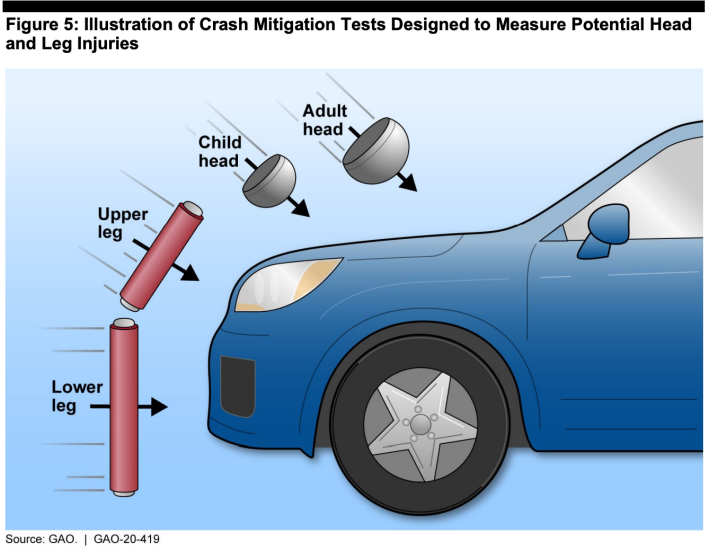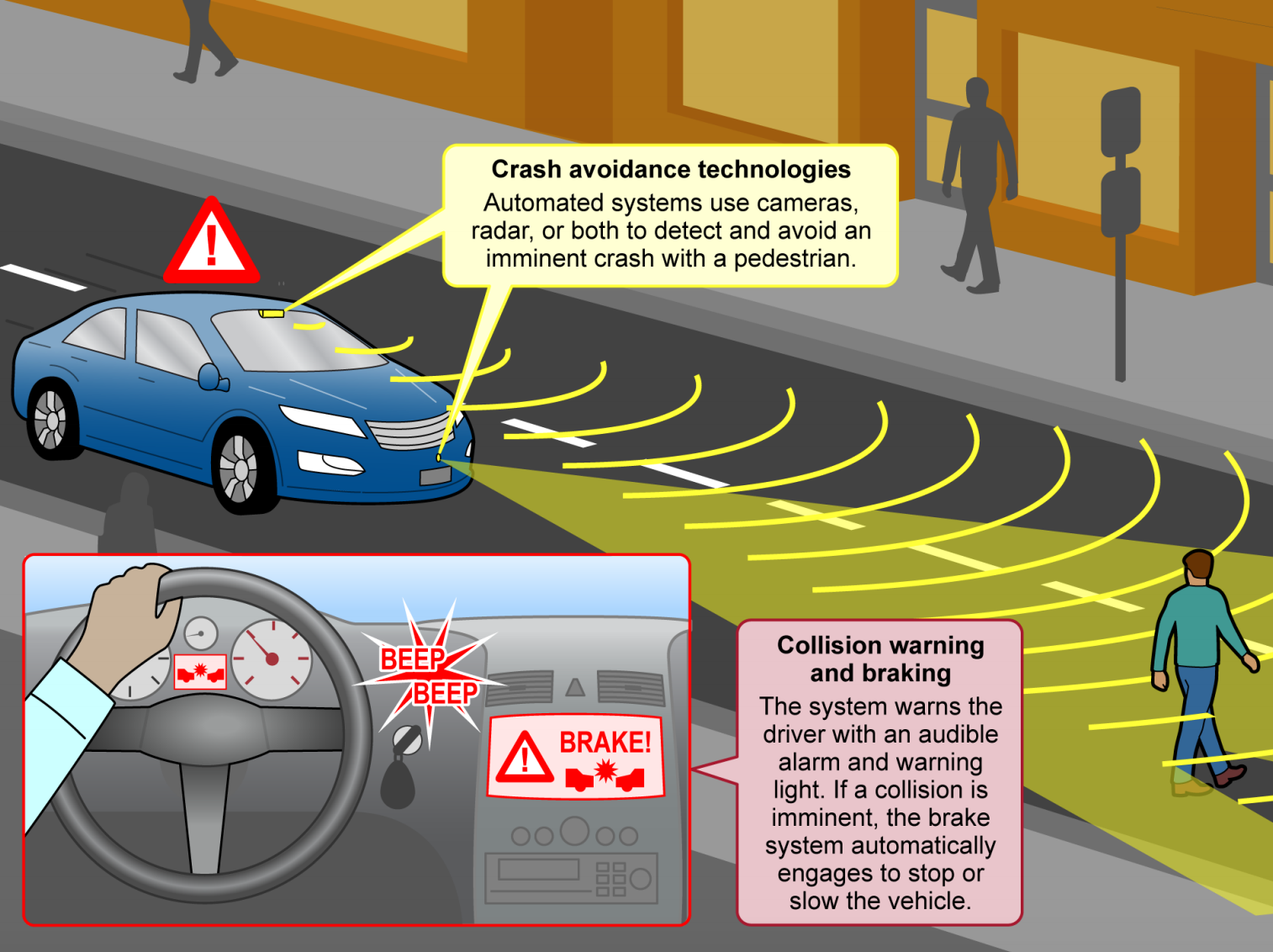Join us at the virtual Shared Mobility Summit on May 5-6 for powerful plenary speakers, hyper-relevant sessions, small-group discussions, a virtual Startup Spotlight, a virtual expo, and a hosted reception. We’ll address how transit and shared mobility can respond and recover from COVID-19 and work for everyone. REGISTER TODAY.
Federal regulators have failed to consider the safety of pedestrians in their vehicle safety standards for far too long— and now the Government Accountability Office is calling them out.
The GAO is pressuring the National Highway Traffic Safety Administration to do what forward-thinking countries around the world did over a decade ago, and finally require automakers to start testing how likely their cars are to kill a pedestrian in a collision. Currently, U.S. vehicle manufacturers are only required to meet crash safety standards for the people inside their vehicles.
International standards for pedestrian crash mitigation tests have existed since way back in 2008. The same year, NHTSA updated its New Car Assessment program — a consumer education service that tells drivers how well the car's occupants are likely to fare in a crash — but chose not to adopt a process that could have saved countless pedestrian lives.

The role that vehicle design plays in our pedestrian death crisis had gotten substantial attention from researchers in the last few years, even if it hasn't resulted in the kind of urgent policy action that data suggests we need. In particular, the rising popularity of SUVs and light trucks has experts worried: the probability of death for a pedestrian who gets hit by a larger-than-average vehicle is 3.4 times higher than one who gets hit by a smaller passenger car, in large part because an urban assault vehicle is more likely to strike a walker at the head or neck level. Unsurprisingly, as huge cars became increasingly popular since 2008, SUV-involved pedestrian fatalities have risen 68 percent— faster than any other body style.
Given the wild popularity and profitability of their deadliest models, it's not hard to speculate on why NHTSA might have slow-walked the path to enhanced pedestrian safety standards and assessments for vehicles. The automotive industry spent 69 million dollars on lobbyists last year — more than commercial banks spent on their efforts to influence Congress.
The GAO also thinks that U.S. automakers' relatively slow adoption of pedestrian detection systems on newer vehicles also plays a role in the death toll. Techy solutions like pedestrian automatic emergency braking and audible "crash mitigation features" (a.k.a. an alarm that squeals at you when your car is approaching a body) are at the core of the most recent United Nations vehicle safety standards. The technology is far from perfect — automatic braking only prevented about 38 percent of rear-end crashes even at slow speeds, according to one study — but it's still a useful tool.
But the U.S. currently leaves it up to automakers to determine whether they should adopt the technology on their cars — and allows them to charge customers more for the optional safety feature. Only 47 percent of 2019 vehicle models even offered both crash mitigation and auto-braking features, and in 23 percent of models, these features were add-ons.

But what's even more troubling about the GAO's report is just how often vehicle design simply can't save pedestrian lives — because cars are still inherently dangerous machines, even if we design some of them to be a little friendlier to pedestrians than others.
In particular, the agency pointed out that since 2008, pedestrian-involved crashes had increased most among drivers traveling more than 30 miles per hour — a factor that has little to do with vehicle design, especially on American cars, which do not employ the kind of speed limiters that are becoming increasingly common in Europe.
And even if speed limiters (and every other vehicle design-based pedestrian safety solution) were slapped on new cars tomorrow, that doesn't mean that our roads would instantly be safer – because we'd need to wait for the older, more dangerous models to age off the streets. As the GAO identified in its report, vehicle-pedestrian crashes that involved new cars were less likely to be fatal than crashes involving cars that were 11 years old or olde, because new cars are more likely to have advanced pedestrian detection technology — which is imperfect, but better than nothing.
Th agency also suspects there are other vehicle design factors making our pedestrian death crisis worse — but we don't know about them, because pedestrian crash reporting is so spotty.
"Collecting and analyzing data on the causes of vehicle-pedestrian crashes to identify the role of vehicle characteristics should be our first priority," said the GAO's Director of Physical Infrastructure Issues Andrew Von Ah.
But until we implement more holistic solutions to curb pedestrian deaths, the very least we can do is give the NCAP a long-overdue update — and finally force automakers to spare a thought for pedestrian safety. Call your legislators, folks.







